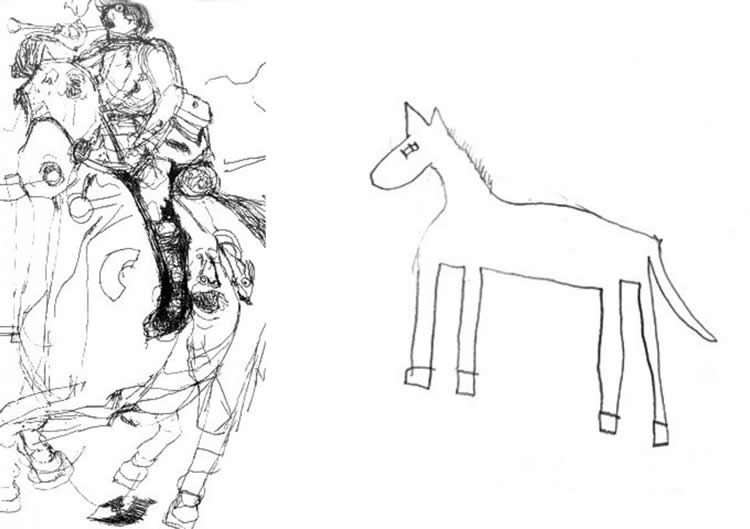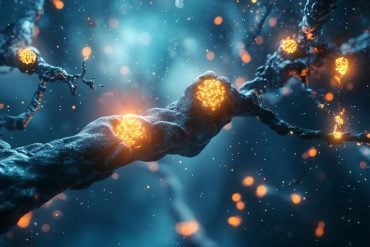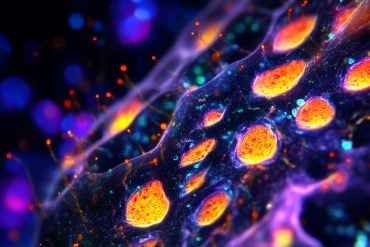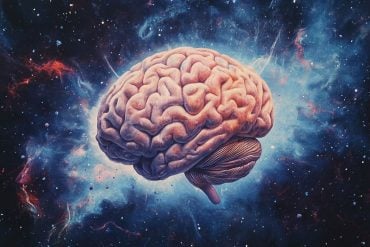Summary: A new study reveals a common autistic trait, the ability to focus on detail, may have allowed realism to flourish in Upper Paleolithic art.
Source: University of York.
The ability to focus on detail, a common trait among people with autism, allowed realism to flourish in Ice Age art, according to researchers at the University of York.
Around 30,000 years ago realistic art suddenly flourished in Europe. Extremely accurate depictions of bears, bison, horses and lions decorate the walls of Ice Age archaeological sites such as Chauvet Cave in southern France.
Why our ice age ancestors created exceptionally realistic art rather than the very simple or stylised art of earlier modern humans has long perplexed researchers.
Many have argued that psychotropic drugs were behind the detailed illustrations. The popular idea that drugs might make people better at art led to a number of ethically-dubious studies in the 60s where participants were given art materials and LSD.
The authors of the new study discount that theory, arguing instead that individuals with “detail focus”, a trait linked to autism, kicked off an artistic movement that led to the proliferation of realistic cave drawings across Europe.
Lead author of the paper, Dr Penny Spikins from the Department of Archaeology at the University of York, said: “Detail focus is what determines whether you can draw realistically; you need it in order to be a talented realistic artist. This trait is found very commonly in people with autism and rarely occurs in people without it.

“We looked at the evidence from studies attempting to identify a link between artistic talent and drug use, and found that drugs can only serve to dis-inhibit individuals with a pre-existing ability. The idea that people with a high degree of detail focus, many of which may have had autism, set a trend for extreme realism in ice age art is a more convincing explanation.”
The research adds to a growing body of evidence that people with autistic traits played an important role in human evolution.
Dr Spikins added: “Individuals with this trait – both those who would be diagnosed with autism in the modern day and those that wouldn’t – likely played an important part in human evolution and survival as we colonised Europe.
“As well as contributing to early culture, people with the attention to detail needed to paint realistic art would also have had the focus to create complex tools from materials such as bone, rock and wood. These skills became increasingly important in enabling us to adapt to the harsh environments we encountered in Europe.”
Source: Shelley Hughes – University of York
Publisher: Organized by NeuroscienceNews.com.
Image Source: NeuroscienceNews.com image is credited to Penny Spikins, University of York.
Original Research: Open access research for “How Do We Explain ‛Autistic Traits’ in European Upper Palaeolithic Art?” by Penny Spikins, Callum Scott, and Barry Wright in Open Archaeology. Published May 12 2018.
doi:10.1515/opar-2018-0016
[cbtabs][cbtab title=”MLA”]University of York “How Our Ancestors with Autistic Traits Led a Revolution in Ice Age Art.” NeuroscienceNews. NeuroscienceNews, 14 May 2018.
<https://neurosciencenews.com/autism-ice-age-art-9040/>.[/cbtab][cbtab title=”APA”]University of York (2018, May 14). How Our Ancestors with Autistic Traits Led a Revolution in Ice Age Art. NeuroscienceNews. Retrieved May 14, 2018 from https://neurosciencenews.com/autism-ice-age-art-9040/[/cbtab][cbtab title=”Chicago”]University of York “How Our Ancestors with Autistic Traits Led a Revolution in Ice Age Art.” https://neurosciencenews.com/autism-ice-age-art-9040/ (accessed May 14, 2018).[/cbtab][/cbtabs]
Abstract
How Do We Explain ‛Autistic Traits’ in European Upper Palaeolithic Art?
Traits in Upper Palaeolithic art which are also seen in the work of talented artists with autism, including most obviously an exceptional realism, remain to be explained. However any association between the famously evocative animal depictions created in the European Upper Palaeolithic and what is commonly seen as a ‘disorder’ has always been contentious. Debate over these similarities has been heated, with explanations ranging from famous works of Upper Palaeolithic art having been created by individuals with autism spectrum conditions, to being influenced by such individuals, to being a product of the use of psychotropic drugs. Here we argue that ‘autistic traits’ in art, such as extreme realism, have been created by individuals with a cognitive extreme of local processing bias, or detail focus. The significance of local processing bias, which is found both as a feature of autism spectrum conditions and in artists with exceptional talent at realistic depiction who aren’t autistic, has implications for our understanding of Upper Palaeolithic society in general, as well as of the roles played by individuals with autism spectrum conditions.






